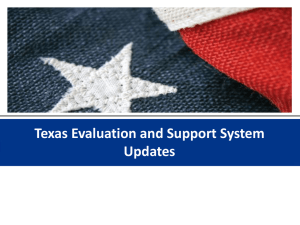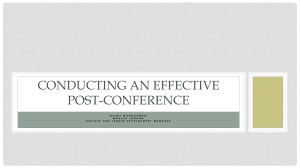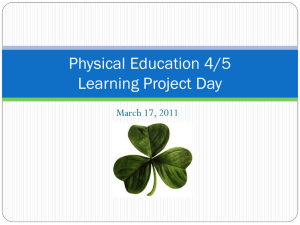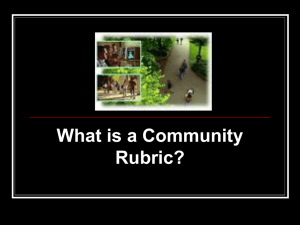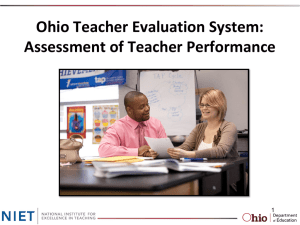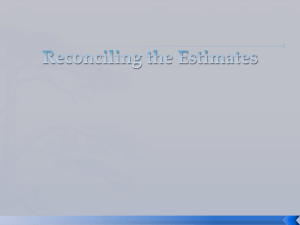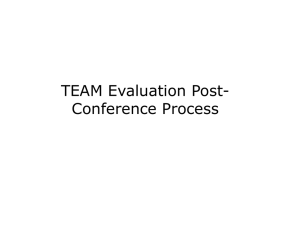Click here for the PowerPoint Presentation
advertisement
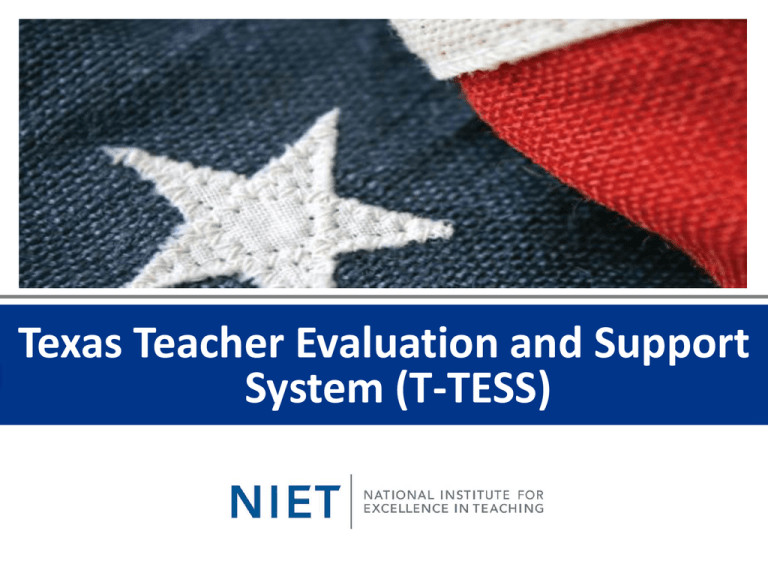
Texas Teacher Evaluation and Support System (T-TESS) Evaluation Systems T-TESS T-PESS Texas Teacher Evaluation and Support System Texas Principal Evaluation and Support System NIET McREL Looking Back PDAS – 1997 Professional Development Appraisal System Then and Now Texas Teacher Standards New! •149.001 – Purpose: The standards identified in this section are performance standards to be used to inform the training, appraisal, and professional development of teachers. • Six (6) Standards • Standard 1: Instructional Planning and Delivery • Standard 2: Knowledge of Students and Student Learning • Standard 3: Content Knowledge and Expertise • Standard 4: Learning Environment • Standard 5: Data-Driven Practice • Standard 6: Professional Practices and Responsibilities Texas Administrative Code, Chapter 149. – Effective June 8, 2014. T-TESS Timelines and Pilot Sites 2014-2015 – 65 Pilot LEAs 2015-2016 – Refinement Year – Approximately 200 LEAs 2016-2017 – Statewide Implementation Effective Classroom Lessons As you reflect upon a recent lesson you observed that was effective, what occurred during that lesson that led it to be effective? T-TESS Rubric Overview Planning • Standards and Alignment • Data and Assessment • Knowledge of Students • Activities Learning Environment Instruction • • • • • Achieving Expectations Content Knowledge and Expertise Communication Differentiation Monitor and Adjust • Classroom Environment, Routines, and Procedures • Managing Student Behavior • Classroom Culture • Professional Demeanor and Ethics Professional Practices and Responsibilities • Goal Setting • Professional Development • School Community Involvement It’s a Process, not an Event. • Overview and Introduction • Public Learners • T-TESS Experts T-TESS Overview Student Growth (Value Added, Student Learning Objectives, District Assessments, Pre/Post Assessments) Observations (both formal and informal) Requirements and Recommendations Requirements Recommendations One observation Multiple observations – formal and informal 45 minute minimum for observation Observations should be lesson length (beginning, middle and end) No requirements for announced versus unannounced At least 1 announced and 1 unannounced observation Post conference within 10 business Post conference within 48 hours days (feedback) in-person Pre-conference is optional Pre-conferences should take place for all announced observations * Teacher self-reflection ratings are not required but recommended. T-TESS Rubric Handout T-TESS Rubric Domain T-TESS Rubric T-TESS Rubric Dimension T-TESS Rubric T-TESS Rubric Descriptors Descriptors T-TESS Rubric T-TESS Rubric Performance Levels Evaluation Cycle Announced PreConference Observation PostConference Unannounced Observation PostConference Collective Evidence is Essential • Detailed Collection of Evidence: Unbiased notes of what occurs during a classroom lesson. • Capture: • what the teacher says • what the teacher does • what the students say • what the students do • Copy wording from visuals used during the lesson. • Record time segments of lesson. The collection of detailed evidence is ESSENTIAL for the observation process to be implemented accurately, fairly, and for the intended purpose of the process. When Do You Collect Evidence Prior to the Lesson Being Observed • Pre-conference • Review of lesson and/or unit plans as applicable During the Lesson • What the teacher says and does • What the students say and do After the Lesson • Communication between classroom observation and postconference Purpose of the Pre-Conferences • To provide the teacher with an opportunity to share his/her thought process in developing the lesson/plan and provide additional details about the upcoming observation. • To clarify expectations for teacher and student performance. • To provide the appraiser with information about the lesson observation and criteria that may not be directly observable. Four Key Elements of the Instructional Post-Conference Introduction Reinforcement Refinement Greeting Reinforcement Area (Dimension) Refinement Area (Dimension) Review Conference Process Self-Analysis and Follow-Up Questions Self-Analysis and Follow-Up Questions Ask a general impression question about the lesson. Share Evidence for Reinforcement Share Evidence for Refinement Share Recommendations Review Ratings Share Evidence for Ratings T-TESS Appraisal Timeline Teacher Overviews & Rubric Rollouts Targeted Dimension Rollouts Tied to Observations and Feedback Develop Teacher Capacity Over Time Self-Assessment , Goal Setting and Professional Development Plan Data • Ongoing review of teacher and student performance data and the relationship between these two Goals • Ongoing review of goals and progress towards the goals through data analysis and professional development Growth • Ongoing review of areas of reinforcement, refinement and professional development which contributes to teacher growth Portal Modules How are portal modules used to establish a common understanding about the dimensions? Observation Portal Roles • • • • • • • Teacher Teacher Appraiser School Administrator Assistant School Administrator District Viewer District Administrator … Pools • Teacher Pools Observation Observation Evidence Sheet T-TESS Observation Evidence Sheet Domain: Instruction Dimension Achieving Expectations 2.1 Content Knowledge and Expertise 2.2 Communication 2.3 Differentiation 2.4 Monitor and Adjust 2.5 Evidence Click here to enter text. Rating Click here to enter text. Click here to enter text. Click here to enter text. Click here to enter text. Click here to enter text. Click here to enter text. Click here to enter text. Click here to enter text. Click here to enter text. Domain: Learning Environment Dimension Classroom Environment, Routines and Procedures 3.1 Managing Student Behavior 3.2 Classroom Culture 3.3 Evidence Click here to enter text. Rating Click here to enter text. Click here to enter text. Click here to enter text. Click here to enter text. Click here to enter text. Observation Entry – Page 1 Arts Career and Technology English/Language Arts/Reading Exploratory Foreign Languages Math Science Social Studies Special Education Other Observation Entry – Page 2 Observation Entry – Page 3 Appraiser Calibrations What processes are pilot districts using for appraisers to calibrate observations? Training Portal: Reports and Data https://teachfortexas.org Avoiding the DRIP Concept DRIP - Data Rich - Information Poor* Teacher Grade/Level Department School District *Waterman, 1987 Data Quality: Teacher Effectiveness Input Output Calibration Reports Reports Reports Reports Reports Reports Reports T-TESS Thoughts… "Great teaching is at the core of every quality education system." "Research shows that there is no greater in-school factor than having an outstanding education in the classroom." T-TESS was developed by educators for educators. T-TESS is aligned to research-based, best practices for teaching and learning. The T-TESS Rubric aligns directly with the new Texas Teacher Standards. The T-TESS process provides for actionable, timely feedback, allowing teachers set goals and identify professional development that will lead to refinement in knowledge and skills. T-TESS Thoughts… The 'Proficient' performance level is representative of a 'Rock Solid' teacher. There will be some necessary culture shifts to establish a new mind set for the relationship with appraisals and supporting teachers. Everyone in the school community is a public learner. The ultimate outcome is improved student achievement. Training Portal: Appraiser Resources https://teachfortexas.org Thanks for Your Participation…!

